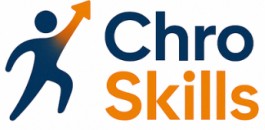
Understanding the Role of a CHRO in Document Management
The Strategic Role of a CHRO in Document Management
The Chief Human Resources Officer (CHRO) plays a pivotal role in shaping the document management landscape within an organization. As businesses grow, the complexity of managing employee files and records increases, necessitating a robust system to handle these tasks efficiently. The CHRO is at the forefront of this challenge, ensuring that the human resources department not only manages documents effectively but also aligns with the broader business objectives.
One of the primary responsibilities of a CHRO is to oversee the implementation of a comprehensive document management system. This involves selecting management software that offers a friendly interface and features designed to streamline processes. The goal is to provide easy access to employee documents while maintaining the security and integrity of sensitive data. A well-chosen platform can significantly enhance the efficiency of HR teams, allowing them to focus on strategic initiatives rather than being bogged down by administrative tasks.
Moreover, the CHRO must ensure that the document management system is compliant with legal and regulatory requirements. This involves establishing audit trails and secure access protocols to protect employee records. Compliance is not just about avoiding legal pitfalls; it also builds trust with employees by demonstrating a commitment to safeguarding their personal information.
In addition to compliance, the CHRO must focus on integrating technology that supports document workflows and enhances the overall management solution. This includes leveraging management systems that offer seamless integration with existing HR processes and software. By doing so, the CHRO can ensure that the system is not only effective but also scalable to meet future business needs.
Ultimately, the CHRO's role in document management is about creating a system that is both efficient and secure. By implementing best practices and leveraging the right technology, the CHRO can transform the way employee files are managed, leading to improved data access and better decision-making across the organization.
Key Skills for Effective Document Management
Vital Competencies for Successful Document Management
In the ever-evolving landscape of human resources, the Chief Human Resources Officer (CHRO) plays an integral role in orchestrating effective document management. A comprehensive understanding of key skills can streamline processes, optimize workflows, and maintain compliance alongside an agile team. Here, we explore the essential competencies that a CHRO must possess to advance document management within an organization.- Leadership and Strategic Insight: Effective document management begins with strong leadership. The CHRO must lead HR teams in recognizing the strategic importance of well-structured document workflows, ensuring that employee records, employee files, and other vital data are systematically managed.
- Knowledge of Document Management Software: Familiarity with various management systems is crucial. A CHRO should be adept in platforms designed for document management, ensuring optimal employee access and secure file storage. Understanding the features of management software aids in selecting the best document management solutions tailored for business needs.
- Compliance and Security Expertise: Given the sensitive nature of employee files, compliance with legal and regulatory requirements is non-negotiable. The CHRO must ensure robust security measures and audit trails are integrated into document management systems, guarding against unauthorized access and maintaining confidentiality.
- Technical Proficiency: As documents transition to digital formats, a CHRO should be equipped with a degree of technical proficiency. This includes understanding content management systems, file management procedures, and implementing technology to enhance system efficiencies.
- Problem-Solving and Adaptability: The ability to troubleshoot document-related issues and adapt processes in response to evolving business needs is indispensable. This skill enables HR teams to maintain a fluid and responsive document management environment, optimizing both daily operations and long-term endeavors.
- Communication and Collaboration Skills: A pivotal aspect of a CHRO's role involves communicating effectively with various stakeholders and facilitating collaboration across departments. This ensures that users can access employee files seamlessly with a friendly interface, enhancing overall efficiency and promoting a culture of continuous improvement.
Implementing Technology in HR Document Management
Leveraging Technology for HR Document Management
Implementing the right technology in HR document management is essential for ensuring efficient operations. When selecting management software, it is vital to opt for a platform designed with a friendly interface that allows for easy access and streamlined workflows. Business needs and employee records should be at the forefront of this decision. Modern document management systems offer a range of features. These include secure file management, user access controls, and automated audit trails. Such features not only enhance security and compliance but also simplify document workflows for HR teams. To maximize efficiency, look for a management solution that integrates seamlessly with existing processes and management systems, especially those involving employee documents. Another key aspect is content management. A well-developed system should support the end-to-end lifecycle of employee files, from creating and storing records to accessing and archiving them. Equipped with robust search functionalities, the best document management solution will allow users to locate and access files swiftly, reducing the time spent on document retrieval. In the era of digital transformation, leveraging technology means adopting software that supports compliance and data security practices. This includes regular updates to the management platform and ensuring that access employee controls are both stringent and user-friendly. By doing so, HR departments can maintain secure management of sensitive employee files and records. For organizations looking to enhance their HR processes further, automated systems are a game-changer. They not only improve the organization of employee files but also free up valuable time for HR teams. To explore how automation can boost efficiency, enhancing efficiency with automated insurance documentation offers valuable insights into automated solutions that can be adopted.Ensuring Compliance and Security
Protecting Sensitive Employee Data and Maintaining Compliance
When it comes to handling sensitive employee records, ensuring compliance with legal and regulatory requirements is paramount. Human resources teams are tasked with managing a significant volume of employee files, and protecting this data from unauthorized access or breaches is critical. Implementing robust security measures and following best practices in document management are essential to safeguarding information. To maintain a secure system, consider the following key areas:- Security Features: Utilize management software that offers advanced security features, such as encryption and multi-factor authentication. These features can help protect your file management system from unauthorized access.
- Access Controls: Grant users access to employee files based on their roles and responsibilities. This limits exposure to sensitive information and ensures that only authorized personnel can manage employee data.
- Audit Trails: Implement audit trails to monitor changes and access to employee files. This practice not only helps track document workflows but also supports compliance efforts by providing a record of who accessed or modified documents.
- Compliance Checks: Regularly review and update your content management practices to ensure they align with current compliance standards. Staying informed about changes in regulations and adapting your processes accordingly can prevent potential legal issues.
Streamlining Processes for Better Efficiency
Enhancing Operational Efficiency
Efficient HR document management is essential for maintaining seamless operations within an organization. Streamlining processes enhances management practices and allows for easy access and retrieval of employee files. A well-organized file management system reduces the time spent on finding specific documents, significantly boosting productivity across HR departments. To achieve optimal efficiency, consider these approaches:- Standardize Document Workflows: Implement consistent procedures for creating, reviewing, and storing files. Standardized workflows minimize errors and ensure that all users manage employee documents in a uniform manner.
- Automate Routine Tasks: Utilizing management software to automate repetitive tasks, such as data entry and file organization, frees up HR staff members’ resources for more strategic activities. Automation enhances document workflows by reducing manual intervention and time spent on mundane tasks.
- Integrate a Secure System: Employing a secure document management solution helps protect sensitive employee records from unauthorized access. By mapping out efficient security measures and compliance protocols, businesses can ensure the secure handling of employee files.
- Leverage Management Features: Explore features such as audit trails and content management systems. These tools provide insights and track changes within the document management platform, ensuring transparency and accountability among teams.
- Adopt a User-Friendly Interface: Choose a platform designed with a friendly interface to simplify navigation for your HR teams. Intuitive design reduces the learning curve, making it easier for users to access employee records swiftly.













